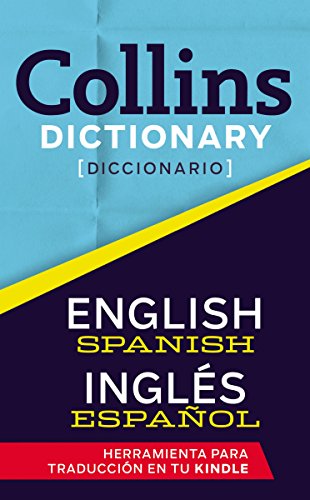In this article, we will explore the various ways to respond to the common Spanish phrase “¿Qué haces?” as well as provide tips on how to keep the conversation flowing smoothly.
Understanding “Estoy” Responses
When someone responds with “Estoy” in Spanish, they are simply saying “I am” in English. This can be followed by an activity or emotion, such as “Estoy trabajando” (I am working) or “Estoy feliz” (I am happy).
To respond to a “Que haces” question, you can simply say what you are doing at that moment. For example, “Estoy estudiando” (I am studying) or “Estoy cocinando” (I am cooking).
Remember to use the verb “estar” in your response and match it with the appropriate activity or emotion. This will help you have a basic conversation in Spanish and practice your language skills.
Practice with different activities to expand your vocabulary and improve your fluency.
Contextual Variations in Tone and Meaning
When responding to “¿Qué haces? ” in Spanish, remember that the tone and meaning can vary depending on the context. Your response should match the level of formality of the question. For example, a simple “Nada” might be appropriate for a casual conversation with friends, while a more detailed response like “Estoy trabajando” would be better in a professional setting. Pay attention to cues like body language and intonation to understand the true meaning behind the question.
Practice different responses to “¿Qué haces? ” to become more fluent in Spanish conversation. ¡Buena suerte!
Expressing Disapproval or Surprise
To respond to these expressions, you can say “Lo siento, no lo volveré a hacer” (I’m sorry, I won’t do it again) or “Fue un error, lo siento mucho” (It was a mistake, I’m very sorry).
Differentiating “Qué haces?” and “Qué estás haciendo?”
“Qué haces?” is asking what someone is doing in general, while “Qué estás haciendo?” is asking what someone is currently doing.
Establishing the Intent of the Inquiry

When responding to a “Que haces? ” inquiry in Spanish, it’s important to establish the intent behind the question. This phrase translates to “What are you doing? ” so your response should reflect your current actions. You can reply with estoy trabajando (I am working), estoy estudiando (I am studying), or any other activity you are engaged in. It’s a common greeting in Spanish-speaking countries, so knowing how to respond appropriately will help you engage in conversations more effectively.
Appropriate Usage Among Friends
When using “¿Qué haces? ” among friends in Spanish, it’s a casual way to ask “What are you doing? ” You can respond with “Nada” (nothing) if you’re not up to much. If you’re busy, you can say “Estoy ocupado/a” (I’m busy) or “Estoy trabajando” (I’m working). If you’re going out, you can say “Voy a salir” (I’m going out) or “Estoy en camino” (I’m on my way).
Cultural Nuances in Greetings
When someone asks “¿Qué haces? ” (What are you doing? ) in Spanish, it’s common to respond with a simple answer like “Nada” (Nothing) or mention a specific activity. This question is a casual way to inquire about someone’s current activities or plans. If you want to be polite, you can also say “Gracias” (Thank you) before sharing your response.
Alternative Expressions for Checking Well-being
When someone asks “¿Qué haces?” in Spanish, they may be inquiring about your well-being, so it’s important to respond with alternative expressions that convey how you are feeling. Instead of simply saying “bien” or “regular,” you can use phrases like “Estoy genial,” “Me siento excelente,” or “Todo va sobre ruedas.” These responses show that you are doing well and can spark a more meaningful conversation.
Clarifying Questions about Profession
When someone asks you “¿Qué haces? ” (What do you do? ), they are inquiring about your profession. Your response should be clear and concise, stating your occupation in Spanish.
For example, you could say “Soy profesor” (I am a teacher) or “Trabajo en marketing” (I work in marketing). It is also common to ask the other person about their profession after answering the question.
Crafting Replies to Casual Greetings
Crafting replies to casual greetings in Spanish can be simple and fun. When someone asks “¿Qué haces? ” (What are you doing? ), you can reply with something like “Estoy trabajando” (I’m working) or “Estoy descansando” (I’m resting). Keep your responses short and sweet, and don’t be afraid to ask the other person the same question in return.
This is a great way to keep the conversation going and show interest in the other person’s activities. Practice these responses with friends or online language exchanges to improve your Spanish skills. ¡Buena suerte! (Good luck!
Interpreting the Meaning of “Buenos Días”

When someone says “Buenos días” to you in Spanish, they are simply greeting you with “Good morning”. It’s a common salutation used in Spanish-speaking countries to greet someone in the morning.
If someone greets you with “Buenos días”, a common response would be to reply with “Buenos días” in return. This is a polite way to acknowledge their greeting and wish them a good morning as well.
Responding to Time-Related Inquiries
![]()
When responding to time-related inquiries in Spanish, it is important to use the correct expressions. For example, when asked “¿Qué haces? ” you can respond with “Estoy trabajando” (I am working) or “Estoy estudiando” (I am studying). If someone asks “¿Qué estás haciendo? ” you can reply with “Estoy cocinando” (I am cooking) or “Estoy leyendo” (I am reading). It is also common to use phrases like “Ahora mismo” (right now) or “En este momento” (at this moment) to indicate the current activity.
Decoding Laughter in Digital Communication
When someone replies “¿Qué haces?” in Spanish, they are asking “What are you doing?”. It is a casual way to start a conversation and show interest in the other person’s activities.
If you want to reply, you can say “Estoy…” followed by your activity. For example, “Estoy trabajando” means “I am working.”
This type of interaction is common in digital communication, especially on social media or messaging apps. It helps to create a friendly and engaging atmosphere.
Understanding these simple phrases can help you navigate conversations in Spanish and connect with Spanish speakers online. ¡Buena suerte!
Understanding the Nuance of “Buenos” vs “Buenas”
When responding to the question “¿Qué haces? “, it’s important to pay attention to the gender of the word being used. “Buenos” is used when referring to masculine nouns, while “buenas” is used for feminine nouns. For example, if someone asks “¿Qué haces? “, you could respond with “Buenos días” if it’s morning, or “Buenas tardes” if it’s afternoon. This small nuance can make a big difference in your Spanish conversations.
Navigating Informal and Formal Contexts
When responding to “Que haces? ” in Spanish, consider the context in which the question is being asked. In informal settings, a simple response like “Nada, ¿y tú? ” (Nothing, and you? ) is appropriate. In more formal contexts, such as at work or with strangers, a more professional response like “Trabajando, ¿y usted?
” (Working, and you? ) is recommended.
Identifying Questions About Current Activities
When someone asks “¿Qué haces? ” (What are you doing? ), they are inquiring about your current activities. To respond, you can simply answer with a verb in the present tense, such as “Estudio” (I study) or “Trabajo” (I work).
If you want to be more specific, you can add additional information like “Estoy leyendo un libro” (I am reading a book) or “Estoy cocinando la cena” (I am cooking dinner).
Avoiding Misinterpretation in Social Interactions
When responding to “Que haces? ” in Spanish, it’s important to provide a clear and appropriate answer to avoid misinterpretation in social interactions. Keep your response straightforward and relevant to the question. Use common phrases like “Estoy trabajando” (I am working) or “Estoy descansando” (I am resting) to convey your current activity. Avoid giving vague or confusing answers to prevent any confusion.
Recognizing Variants of “What’s Up?”
Recognizing variants of “What’s Up? ” in Spanish is crucial for effective communication. Some common responses include “¿Qué haces? ” meaning “What are you doing? ” or “¿Qué tal?
” which translates to “How’s it going? ” These phrases are informal ways to greet someone and start a conversation. When responding, you can say “Nada especial” for “Nothing special” or “Trabajando” for “Working. ” Remember to keep your replies concise and to the point. Practice using these phrases in everyday conversations to improve your Spanish language skills.
¡Buena suerte!

